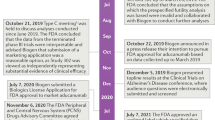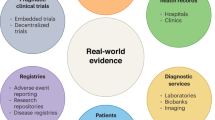Abstract
Double-blinded randomized controlled trials (RCTs) have contributed much important evidence to guide treatment decisions in neurology. RCTs are relatively straightforward to conduct, provided that they investigate common diseases, have clearly defined outcome measures, and are of short duration. In neurology, however, many diseases are uncommon, have no consensus outcome measures, and develop over decades. Basic research into neurological diseases continues to identify candidate therapies faster than they can be tested for their clinical utility, leading to a 'translational gap'. Futility trials were initially developed in oncology to efficiently test candidate therapies in phase II trials. As single-arm unblinded studies, futility trials are relatively easy to conduct, and they generally require smaller sample sizes than RCTs. In this article, we discuss futility models, highlighting their advantages as well as challenges to their application in several neurological diseases, including Parkinson disease, stroke and multiple sclerosis.
This is a preview of subscription content, access via your institution
Access options
Subscribe to this journal
Receive 12 print issues and online access
$209.00 per year
only $17.42 per issue
Buy this article
- Purchase on Springer Link
- Instant access to full article PDF
Prices may be subject to local taxes which are calculated during checkout
Similar content being viewed by others
References
Van Glabbeke, M. et al. Progression-free rate as the principal end-point for phase II trials in soft-tissue sarcomas. Eur. J. Cancer 38, 543–549 (2002).
A'Hern, R. P. Sample size tables for exact single-stage phase II designs. Stat. Med. 20, 859–866 (2001).
Gehan, E. A. The determination of the number of patients required in a preliminary and a follow-up trial of a new chemotherapeutic agent. J. Chronic Dis. 13, 346–353 (1961).
Fleming, T. R. One-sample multiple testing procedure for phase II clinical trials. Biometrics 38, 143–151 (1982).
Simon, R. Optimal two-stage designs for phase II clinical trials. Control. Clin. Trials 10, 1–10 (1989).
NINDS NET-PD Investigators. A randomized, double-blind, futility clinical trial of creatine and minocycline in early Parkinson disease. Neurology 66, 664–671 (2006).
Fahn, S. et al. in Recent Developments in Parkinson's Disease Vol. 2 (eds Fahn, S. et al.) 153–163 (Macmillan Healthcare Information, 1987).
[No authors listed] DATATOP: a multicenter controlled clinical trial in early Parkinson's disease. Parkinson Study Group. Arch. Neurol. 46, 1052–1060 (1989).
Elm, J. J. et al. A responsive outcome for Parkinson's disease neuroprotection futility studies. Ann. Neurol. 57, 197–203 (2005).
Tilley, B. C. et al. Optimizing the ongoing search for new treatments for Parkinson disease: using futility designs. Neurology 66, 628–633 (2006).
D'Agostino, R., Chase, W. & Belanger, A. The appropriateness of some common procedures for testing the equality of two independent binomial populations. The American Statistician 42, 198–202 (1988).
Schwid, S. R. & Cutter, G. R. Futility studies: spending a little to save a lot. Neurology 66, 626–627 (2006).
Tabrizi, S. J. et al. Potential endpoints for clinical trials in premanifest and early Huntington's disease in the TRACK-HD study: analysis of 24 month observational data. Lancet Neurol. 11, 42–53 (2012).
Tabrizi, S. J. et al. Predictors of phenotypic progression and disease onset in premanifest and early-stage Huntington's disease in the TRACK-HD study: analysis of 36-month observational data. Lancet Neurol. 12, 637–649 (2013).
Huntington Study Group HART Investigators. A randomized, double-blind, placebo-controlled trial of pridopidine in Huntington's disease. Mov. Disord. 28, 1407–1415 (2013).
Walker, F. O. Huntington's disease. Lancet 369, 218–228 (2007).
Schrag, A., Ben-Shlomo, Y. & Quinn, N. P. Prevalence of progressive supranuclear palsy and multiple system atrophy: a cross-sectional study. Lancet 354, 1771–1775 (1999).
O'Collins, V. E. et al. 1,026 experimental treatments in acute stroke. Ann. Neurol. 59, 467–477 (2006).
Diener, H. C. et al. NXY-059 for the treatment of acute stroke: pooled analysis of the SAINT I and II Trials. Stroke 39, 1751–1758 (2008).
Green, A. R. & Shuaib, A. Therapeutic strategies for the treatment of stroke. Drug Discov. Today 11, 681–693 (2006).
Sacchetti, M. L. Is it time to definitely abandon neuroprotection in acute ischemic stroke? Stroke 39, 1659–1660 (2008).
Neuhaus, A. A. et al. Importance of preclinical research in the development of neuroprotective strategies for ischemic stroke. JAMA Neurol. 71, 634–639 (2014).
Tymianski, M. Novel approaches to neuroprotection trials in acute ischemic stroke. Stroke 44, 2942–2950 (2013).
Brott, T. et al. Measurements of acute cerebral infarction: a clinical examination scale. Stroke 20, 864–870 (1989).
Van Swieten, J. C., Koudstaal, P. J., Visser, M. C., Schouten, H. J. & van Gijn, J. Interobserver agreement for the assessment of handicap in stroke patients. Stroke 19, 604–607 (1988).
Mahoney, F. I. & Barthel, D. W. Functional evaluation: the Barthel Index. Md State Med. J. 14, 61–65 (1965).
Tilley, B. C. & Galpern, W. R. Screening potential therapies: lessons learned from new paradigms used in Parkinson disease. Stroke 38, 800–803 (2007).
[No authors listed] Tissue plasminogen activator for acute ischemic stroke. The National Institute of Neurological Disorders and Stroke rt-PA Stroke Study Group. N. Engl. J. Med. 333, 1581–1587 (1995).
Palesch, Y. Y., Tilley, B. C., Sackett, D. L., Johnston, K. C. & Woolson, R. Applying a phase II futility study design to therapeutic stroke trials. Stroke 36, 2410–2414 (2005).
Kiernan, M. C. et al. Amyotrophic lateral sclerosis. Lancet 377, 942–955 (2011).
Bensimon, G., Lacomblez, L. & Meininger, V. A controlled trial of riluzole in amyotrophic lateral sclerosis. ALS/Riluzole Study Group. N. Engl. J. Med. 330, 585–591 (1994).
Cudkowicz, M. E. et al. Dexpramipexole versus placebo for patients with amyotrophic lateral sclerosis (EMPOWER): a randomised, double-blind, phase 3 trial. Lancet Neurol. 12, 1059–1067 (2013).
UKMND-LiCALS Study Group et al. Lithium in patients with amyotrophic lateral sclerosis (LiCALS): a phase 3 multicentre, randomised, double-blind, placebo-controlled trial. Lancet Neurol. 12, 339–345 (2013).
Gordon, P. H. et al. Efficacy of minocycline in patients with amyotrophic lateral sclerosis: a phase III randomised trial. Lancet Neurol. 6, 1045–1053 (2007).
Palesch, Y. Y. & Tilley, B. C. An efficient multi-stage, single-arm Phase II futility design for ALS. Amyotroph. Lateral Scler. Other Motor Neuron Disord. 5 (Suppl. 1), 55–56 (2004).
Zerres, K. & Rudnik-Schöneborn, S. Natural history in proximal spinal muscular atrophy. Clinical analysis of 445 patients and suggestions for a modification of existing classifications. Arch. Neurol. 52, 518–523 (1995).
Finkel, R. S. et al. Observational study of spinal muscular atrophy type I and implications for clinical trials. Neurology 83, 810–817 (2014).
Markowitz, J. A., Singh, P. & Darras, B. T. Spinal muscular atrophy: a clinical and research update. Pediatr. Neurol. 46, 1–12 (2012).
Hirtz, D. et al. Challenges and opportunities in clinical trials for spinal muscular atrophy. Neurology 65, 1352–1357 (2005).
Swoboda, K. J. et al. Perspectives on clinical trials in spinal muscular atrophy. J. Child Neurol. 22, 957–966 (2007).
Mercuri, E., Bertini, E. & Iannaccone, S. T. Childhood spinal muscular atrophy: controversies and challenges. Lancet Neurol. 11, 443–452 (2012).
Weinshenker, B. G. et al. The natural history of multiple sclerosis: a geographically based study. I. Clinical course and disability. Brain 112, 133–146 (1989).
Koch, M. W., Cutter, G., Stys, P. K., Yong, V. W. & Metz, L. M. Treatment trials in progressive MS—current challenges and future directions. Nat. Rev. Neurol. 9, 496–503 (2013).
Kurtzke, J. F. Rating neurologic impairment in multiple sclerosis: an expanded disability status scale (EDSS). Neurology 33, 1444–1452 (1983).
Ontaneda, D. et al. Revisiting the multiple sclerosis functional composite: proceedings from the National Multiple Sclerosis Society (NMSS) Task Force on Clinical Disability Measures. Mult. Scler. 18, 1074–1080 (2012).
Cutter, G. R. et al. Development of a multiple sclerosis functional composite as a clinical trial outcome measure. Brain 122, 871–882 (1999).
Bosma, L. V. et al. The search for responsive clinical endpoints in primary progressive multiple sclerosis. Mult. Scler. 15, 715–720 (2009).
Wolinsky, J. S. et al. Glatiramer acetate in primary progressive multiple sclerosis: results of a multinational, multicenter, double-blind, placebo-controlled trial. Ann. Neurol. 61, 14–24 (2007).
Cohen, J. A. et al. Benefit of interferon β-1a on MSFC progression in secondary progressive MS. Neurology 59, 679–687 (2002).
Freedman, M. S. et al. A phase III study evaluating the efficacy and safety of MBP8298 in secondary progressive MS. Neurology 77, 1551–1560 (2011).
Koch, M., Uyttenboogaart, M., van Harten, A., Heerings, M. & De Keyser, J. Fatigue, depression and progression in multiple sclerosis. Mult. Scler. 14, 815–822 (2008).
Koch, M. W. et al. Depression in multiple sclerosis: a long-term longitudinal study. Mult. Scler. 21, 76–82 (2015).
Marson, A. et al. Immediate versus deferred antiepileptic drug treatment for early epilepsy and single seizures: a randomised controlled trial. Lancet 365, 2007–2013 (2005).
Marson, A. G. et al. The SANAD study of effectiveness of carbamazepine, gabapentin, lamotrigine, oxcarbazepine, or topiramate for treatment of partial epilepsy: an unblinded randomised controlled trial. Lancet 369, 1000–1015 (2007).
Marson, A. G. et al. The SANAD study of effectiveness of valproate, lamotrigine, or topiramate for generalised and unclassifiable epilepsy: an unblinded randomised controlled trial. Lancet 369, 1016–1026 (2007).
Kwan, P., Schachter, S. C. & Brodie, M. J. Drug-resistant epilepsy. N. Engl. J. Med. 365, 919–926 (2011).
Arzimanoglou, A. et al. Lennox–Gastaut syndrome: a consensus approach on diagnosis, assessment, management, and trial methodology. Lancet Neurol. 8, 82–93 (2009).
Wheless, J. W. & Constantinou, J. E. Lennox–Gastaut syndrome. Pediatr. Neurol. 17, 203–211 (1997).
Chiron, C. Current therapeutic procedures in Dravet syndrome. Dev. Med. Child Neurol. 53 (Suppl. 2), 16–18 (2011).
Mikati, M. A. & Shamseddine, A. N. Management of Landau–Kleffner syndrome. Paediatr. Drugs 7, 377–389 (2005).
[No authors listed] Considerations on designing clinical trials to evaluate the place of new antiepileptic drugs in the treatment of newly diagnosed and chronic patients with epilepsy. Epilepsia 39, 799–803 (1998).
Rosen, W. G., Mohs, R. C. & Davis, K. L. A new rating scale for Alzheimer's disease. Am. J. Psychiatry 141, 1356–1364 (1984).
Birks, J. Cholinesterase inhibitors for Alzheimer's disease. Cochrane Database of Systematic Reviews, Issue 1. Art. No.: CD005593. http://dx.doi.org/10.1002/14651858.CD005593.
Schrag, A. et al. What is the clinically relevant change on the ADAS-cog? J. Neurol. Neurosurg. Psychiatry 83, 171–173 (2012).
Rascovsky, K. et al. Rate of progression differs in frontotemporal dementia and Alzheimer disease. Neurology 65, 397–403 (2005).
Roberson, E. D. et al. Frontotemporal dementia progresses to death faster than Alzheimer disease. Neurology 65, 719–725 (2005).
Haywood, A. M. Transmissible spongiform encephalopathies. N. Engl. J. Med. 337, 1821–1828 (1997).
Pocchiari, M. et al. Predictors of survival in sporadic Creutzfeldt–Jakob disease and other human transmissible spongiform encephalopathies. Brain 127, 2348–2359 (2004).
Author information
Authors and Affiliations
Contributions
M.W.K. researched data for the article. All the authors made substantial contributions to the discussion of content, to writing the article, and to revising and editing the article before submission.
Corresponding author
Ethics declarations
Competing interests
The authors declare no competing financial interests.
PowerPoint slides
Rights and permissions
About this article
Cite this article
Koch, M., Korngut, L., Patry, D. et al. The promise of futility trials in neurological diseases. Nat Rev Neurol 11, 300–305 (2015). https://doi.org/10.1038/nrneurol.2015.34
Published:
Issue Date:
DOI: https://doi.org/10.1038/nrneurol.2015.34
This article is cited by
-
Facing the urgency of therapies for progressive MS — a Progressive MS Alliance proposal
Nature Reviews Neurology (2021)



